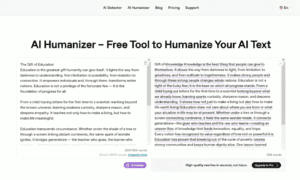Workplace safety is a top priority for businesses in Singapore, and the bizSAFE program plays a crucial role in promoting safe and healthy work environments. Developed by the Workplace Safety and Health Council (WSHC), the bizSAFE framework helps companies implement effective safety practices while enhancing their credibility. However, many business owners are often unsure about the differences between bizSAFE Level 3 and Level 4.
In this article, we’ll break down the key differences between these two levels, their requirements, and how they impact workplace safety standards.
- What is bizSAFE?
The bizSAFE program is a five-step framework designed to help companies build stronger workplace safety and health (WSH) capabilities. It is especially popular among SMEs, as it offers a structured approach to managing risks while boosting business credibility.
The five bizSAFE levels include:
- Level 1: Top management attends a half-day workshop on WSH.
- Level 2: A risk management (RM) champion undergoes training.
- Level 3: The company implements a risk management plan and undergoes an audit.
- Level 4: Workplace safety and health management system (WSHMS) is implemented.
- Level 5: The company achieves bizSAFE Star status, reflecting the highest safety standards.
- bizSAFE Level 3: Focus on Risk Management
bizSAFE Level 3 is a critical stage where companies implement a comprehensive risk management (RM) system. It is a legal requirement under the Workplace Safety and Health (Risk Management) Regulations for all companies in Singapore.
Key Requirements for Level 3:
- Risk Assessment: Companies must identify workplace hazards, assess the risks, and take steps to mitigate them.
- RM Plan Implementation: The company needs to implement the risk management plan (RMP) effectively.
- Audit and Certification: An independent WSHC-approved auditor assesses the company’s compliance. Upon passing the audit, the company receives bizSAFE Level 3 certification.
Benefits of Level 3:
- Legal compliance: Fulfills Singapore’s legal requirements for risk management.
- Enhanced safety culture: Ensures employees are aware of safety risks and preventive measures.
- Credibility and business opportunities: Companies with Level 3 certification are preferred by clients, especially for government contracts.
When to choose Level 3:
- If you need to comply with WSH regulations.
- For projects or tenders that require risk management certification.
- To improve workplace safety standards.
- bizSAFE Level 4: Enhanced Safety Management System
bizSAFE Level 4 goes a step beyond Level 3 by requiring companies to implement a Workplace Safety and Health Management System (WSHMS). This involves establishing more detailed policies, processes, and controls to ensure continuous workplace safety improvement.
Key Requirements for Level 4:
- WSHMS Implementation: Companies must develop a structured system to manage and monitor workplace safety.
- Documentation and Processes: Includes detailed safety policies, procedures, and regular safety reviews.
- Staff Training: Employees are trained on the WSHMS to ensure proper execution.
- Audit and Certification: An accredited SS506 or ISO 45001 auditor conducts the certification assessment.
Benefits of Level 4:
- Stronger safety framework: Demonstrates the company’s commitment to workplace safety.
- Improved risk control: Better identification and management of hazards.
- Enhanced reputation: Preferred by larger corporations and government agencies for contracts.
When to choose Level 4:
- If you want to strengthen your workplace safety policies.
- For projects that require more advanced safety standards.
- To gain a competitive edge in the industry.
- Key Differences Between Level 3 and Level 4
Here’s a quick comparison of the main differences between bizSAFE Level 3 and Level 4:
| Feature | bizSAFE Level 3 | bizSAFE Level 4 |
|---|---|---|
| Focus | Risk management and compliance | WSH management system implementation |
| Requirement | Risk management plan (RMP) | WSHMS implementation |
| Audit | WSHC-approved RM auditor | SS506 or ISO 45001 auditor |
| Legal Compliance | Required by law for certain industries | Not mandatory but enhances credibility |
| Certification Validity | 3 years | 3 years |
| Complexity | Moderate | More comprehensive |
| Preferred for | SMEs and general contracts | Large-scale projects and tenders |
In summary:
- Level 3 focuses on legal compliance and basic risk management.
- Level 4 involves a full-fledged safety management system for greater risk control and credibility.
- Which Level is Right for Your Business?
Choosing between bizSAFE Level 3 and Level 4 depends on your company’s goals and safety needs.
Go for bizSAFE Level 3 if:
- You need to meet legal risk management requirements.
- Your company works on projects that require basic safety certification.
- You want to establish a foundation for workplace safety.
Choose bizSAFE Level 4 if:
- You want to build a stronger safety culture.
- You aim to qualify for larger contracts or government tenders.
- You want a more robust and recognized safety management system.
- How to Upgrade from Level 3 to Level 4
If your company is already bizSAFE Level 3 certified, upgrading to Level 4 involves:
- WSHMS Implementation: Develop and document a comprehensive safety management system.
- Staff Training: Ensure employees are trained on the WSHMS processes.
- Audit by SS506 or ISO 45001 auditor: Undergo a certification audit to verify compliance.
- Obtain Level 4 Certification: Upon successful audit, you will receive Level 4 certification.
Conclusion
Both bizSAFE Level 3 and Level 4 are valuable certifications that enhance workplace safety and business credibility. While Level 3 focuses on risk management and legal compliance, Level 4 takes it further by implementing a structured WSHMS for continuous safety improvement.
For businesses aiming to meet basic safety regulations and tender requirements, Level 3 is a practical choice. However, companies seeking stronger safety standards and a competitive advantage should consider advancing to Level 4.





























